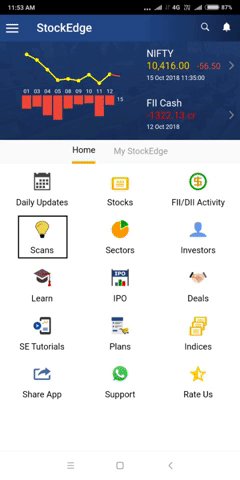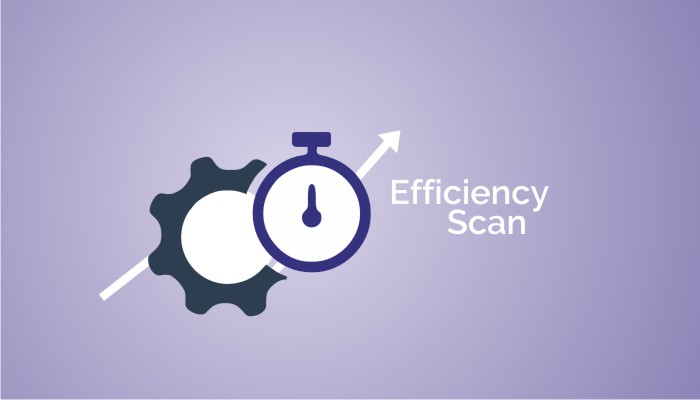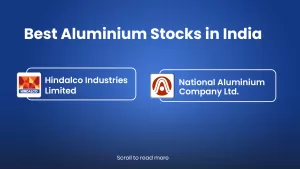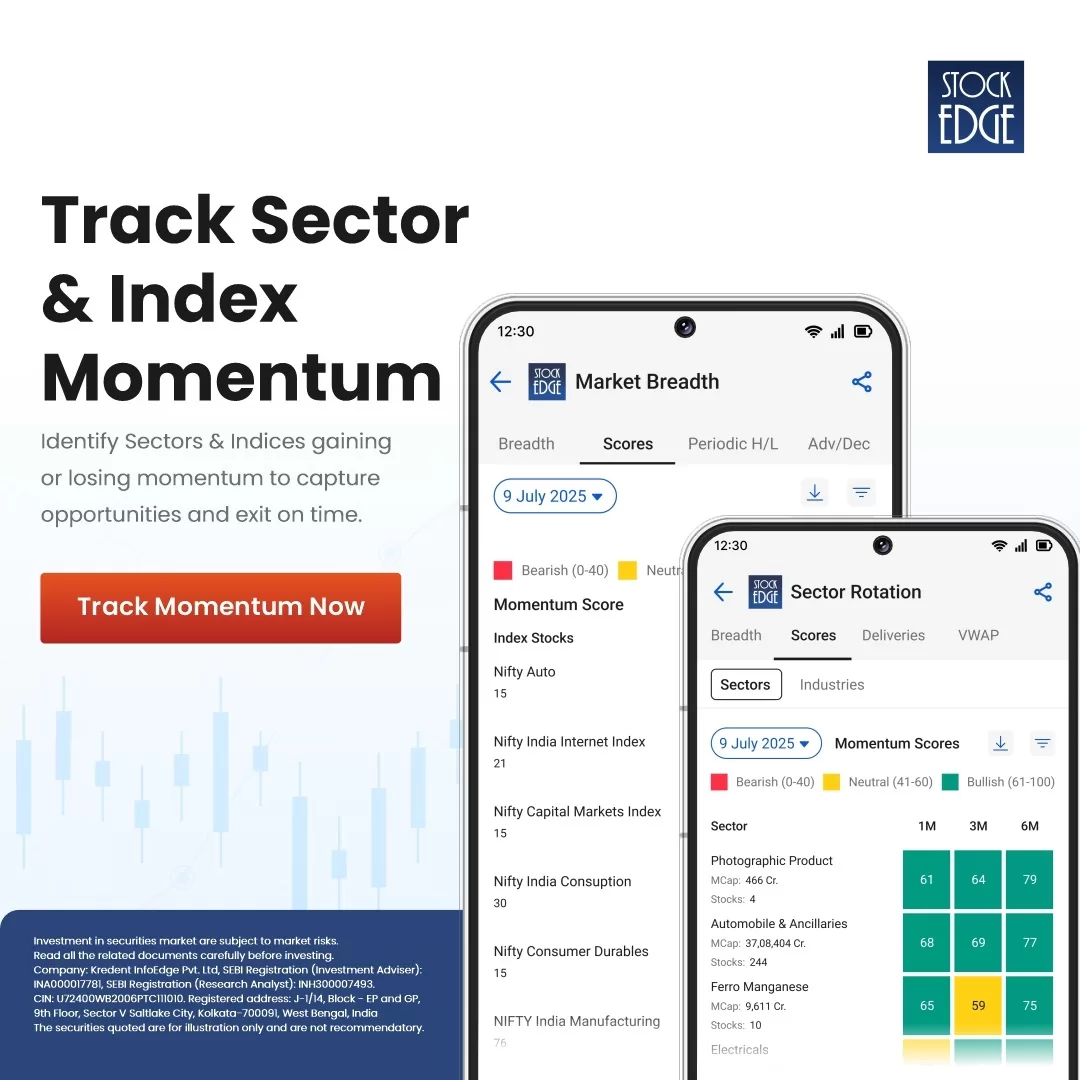Table of Contents
What is efficiency?
No, I am not talking about mine or your efficiency.
I am talking about the efficiency of a company. An efficient company gives better returns. Now I know your next question would be how we can find these kinds of companies.
Well, let me help you to understand it in detail. If a company is efficient it can stay afloat for a longer period of time. You can filter efficient companies by using efficiency ratio of our app Stockedge and it will help you with your investment decisions in a flicker of a second.
Understanding Efficiency Scan Constituents
The Efficiency scans deals with the efficiency in filtering companies based on their Accounts receivables, Accounts Payables, Inventories and Working Capital. Now Accounts receivables deals with the payments that a company has to receive against services rendered or products sold to clients, which means the credit the client owes. Accounts Payables means the payment that a company has to render against its credits. Inventories take into account the goods remaining with the company after the end of the Quarter or Year. Inventories are those which could not be turned into sales as did not get processed into finished products.
Understanding the Constituents
Now I would like to explain what each one explains about the modus operandi about the company.
A company is said to be efficient if days of receivables are decreasing.

What is Account Receivables?
Account Receivables is an accounting term. It is a balance sheet item and comes under the head currents assets. Now understand its impact in detail.
- Increased days of Receivables means that debtors are taking more time to repay for the goods consumed thus increasing working capital requirement which puts stress in the company’s books. It can also create liquidity crunch for the company. If Account Receivables go on rising it can end in default by some debtors leading to bad debts for the company.
- Decreased days of receivables means that the debtors are making the payments as per the specified time frame or even early thereby reducing the need for working capital requirement which is a healthy sign for the company’s books. It improves or rather don’t detoriate the liquidity of the company. Thus companies with decreased days of receivables should be filtered for investments.
Formula
Days of Accounts Receivables= (Accounts Receivables/Credit Sales)* No. Of days in a year
What is Account Payables
Account Payables is an accounting term. It is a balance sheet Item and comes under the head current liabilities. Now understand its impact in detail.
- Increased days of payables mean that the company is taking longer time to repay for the goods purchased on credits from its suppliers which sends a negative signal about the company’s liquidity position. It means the company does not have the required cash flow to meet its short term debt obligations.
- Decreased days of payables means the company’s liquidity is strong thus its able to repay its creditors diligently. It also means that the company has the ability to fulfil its short term debt obligations. Thus one should monitor this closely to understand the company’s financial strength.
Thus companies with decreased days of payables should be filtered for good returns.
Formula
Days of Accounts Payables= (Account Payables/Cost of goods sold) * No of days in a year
What is Inventory
Inventory is the term used for the raw materials which is in turn used to make finished product for sale purpose. Thus the goods which could not be sold are termed as Inventory. Thus turnover of Inventory represents how fast it can be converted to sales to generate earnings for the company. Inventory is a balance sheet item.
- Increased days of Inventories mean that the company is unable to convert its goods into sales as it has purchased more than it can sell. Thus the cash flow is impacted negatively if Inventory turnover ratio increases. It raises concern about the company’s ability to convert its inventory to sales if the Inventory turnover ratio continues to increase.
- Decreased days of Inventory mean that the demand for the product is robust and thus company is able to convert its inventory into sales and thus decreasing inventory turnover ratio hence increasing earning as well as cash flow.
Thus companies with decreased days of Inventory should be filtered to make investments.
Formula
Inventory Turnover ratio=Cost of goods Sold/ Average Inventory
See also: Working Capital
What is Working Capital
Working Capital is the short term component required to meet the daily requirements of a business from purchasing of Inventory to sales of goods. It is a measure of a company’s liquidity and operating efficiencies and its short-term financial health.
Formula
Working Capital= Current Assets – Current Liabilities
- If the working capital is positive, it implies that the current assets are greater than current liabilities and the company is able to meet all its current obligations and run the company operation. It is a positive for the company.
- If the working capital of the company is negative, it implies that the current assets are or sufficient enough to cover the current liabilities and hence these are affecting the operation of the company. This is viewed as a negative for the company and the business of the company will be affected.
Bottomline
Thus to filter out Efficient stocks and stay safe in volatile times and make good investment decisions subscribe to Stockedge. If you still do not have the StockEdge app, download it right now to use this feature. It is a part of the premium offering of StockEdge App.
Click here to know more about the Premium offering of StockEdge.
You can check out the desktop version of StockEdge using this link.









